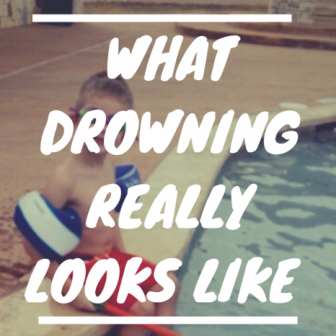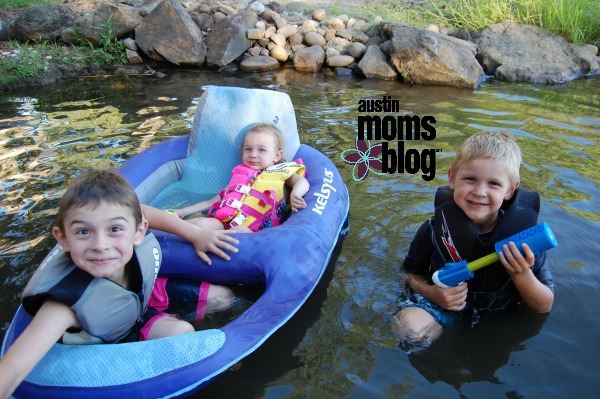Did you know, according to the Centers for Disease Control and Prevention, that about ten people die each DAY from unintentional drowning? Of those ten, two are children under the age of fourteen. My heart sinks when I hear about a child drowning. My family and I spend a lot of time in pools and I am always on high alert because as a child I was not comfortable around water and still struggle with large bodies of water.
So what does drowning REALLY look like?
I’ve seen movies where a swimmer is drowning. They’re frantically moving, water splashing everywhere and screaming for help! Is that what drowning looks like? Actually, No. Drowning does not look anything like how the movies portray it. It’s very different and very scary.
The British Red Cross describes drowning as subtle, quiet and quick.
It’s subtle
While they may splash around and shout while in aquatic distress, once the natural drowning response kicks in, the drowning person will instinctively spread his arms and paddle down in an attempt to stay above the surface. No matter how good an idea it might seem, a person can’t just “stop drowning” for a few seconds to wave for help – it’s literally beyond their control.
It’s quiet
A drowning person will alternately dip below the water and briefly back up again. He’s struggling so hard just to exhale and inhale again — to actually breathe — that speaking doesn’t even come into it.
It’s quick
Someone who is drowning will only last from 20 to 60 seconds before succumbing. Scout-age kids are at the lower end of that time spectrum, so it’s vital to recognize the danger signs. Of course, if someone is splashing and shouting for help (aquatic distress) they still need immediate help, but the time to really worry is when they go quiet.
Water Safety Tips:
- Supervision is Key: Always keep an eye on the children you are with. Stay within reach of the children you are swimming with and avoid distractions such as talking with friends, reading, cell phone usage or any other task that takes you away from supervising the children.
- Depth: Knowing that a children can drown in very shallow water, be sure to keep your children at a safe depth for their abilities.
- Learn to Swim: Sign your children up for swim lessons. Many places offer classes including your local recreational department, YMCA and swim school businesses.
- Life Guards: Try to swim in a location that has life guards, however supervising your children is still very important. I know as a mother of 3, I like to have another adult’s set of eyes on my children.
- Take a CPR class: Your knowledge could save a life!
- Life-Jackets: Have weaker swimmers wear a life-jacket, similar to what you would use while skiing. When in lakes, oceans and other large bodies of water, make sure all swimmers wear life-jackets.
- Fences: If your backyard has a pool, please install a fence to separate the pool from any of the yard or house. It’s also a great idea to have secondary barriers such as sounds to alert the home owner when a gate is opened or automatic locking gates. Most children age 1-4 drown in home swimming pools according to the Center for Disease Control and Prevention.
With Summer in full swing, let’s enjoy the pool with a heightened awareness and keep signing your children up for swim lessons! Can you recommend a favorite place to send children for swim lessons?












